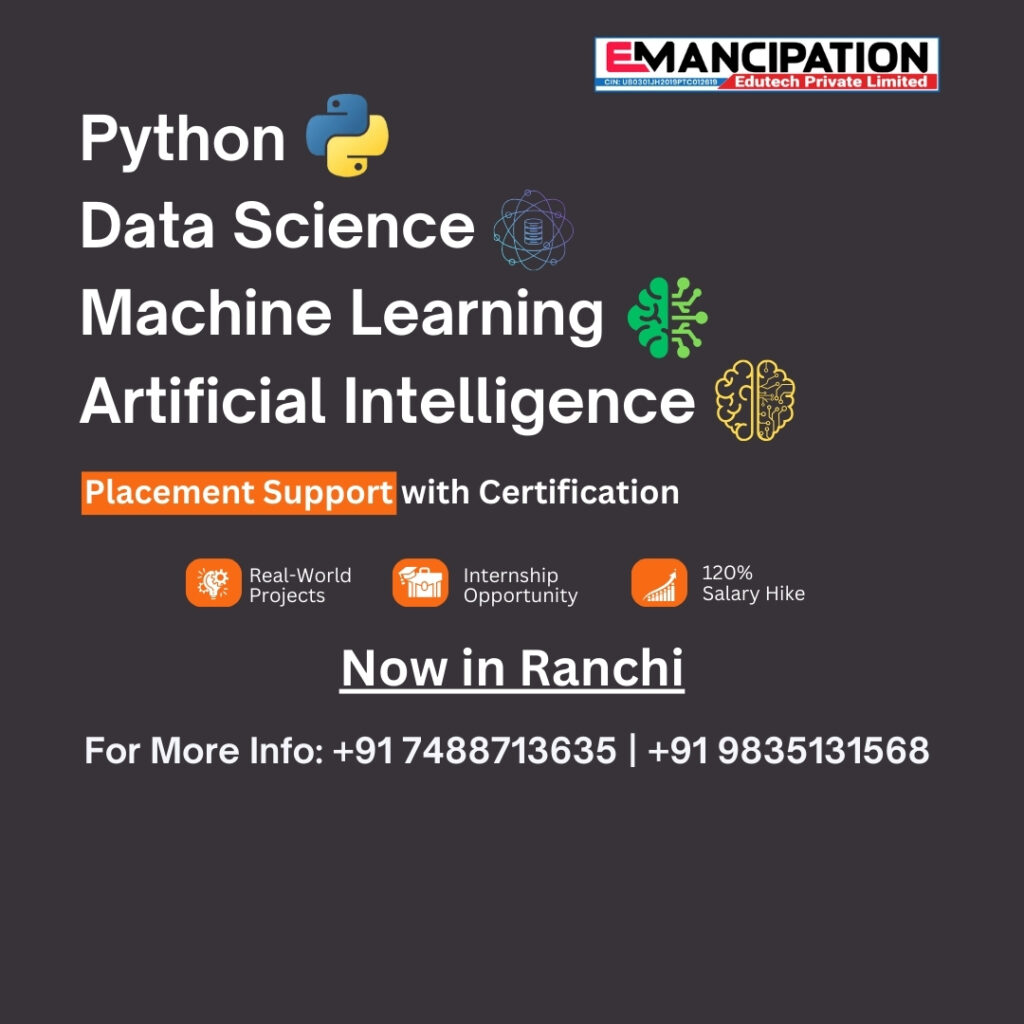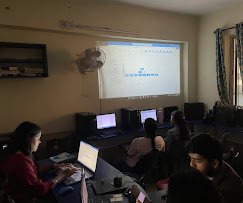AI and Machine Learning Training in Ranchi – Build a Future-Ready Career with Emancipation Edutech
Introduction Artificial Intelligence (AI) and Machine Learning (ML) are transforming the world faster than ever before. From smart assistants to self-driving cars and data-driven businesses, AI and ML have become the backbone of innovation and decision-making. If you want to become a part of this revolution, now is the perfect time to enroll in AI and Machine Learning Training in Ranchi with Emancipation Edutech Pvt. Ltd. At Emancipation Edutech, we don’t just teach technology — we empower students to build real-world solutions. Our AI and ML programs are designed for students, graduates, and working professionals who wish to develop practical skills in data science, Python programming, and intelligent systems. Why Choose AI and Machine Learning as a Career? Artificial Intelligence and Machine Learning are among the fastest-growing career domains in the world. Companies like Google, Amazon, Microsoft, and Tesla are investing heavily in AI-driven solutions. Every industry — from healthcare to finance, education, and manufacturing — needs AI and ML professionals. Here’s why choosing AI and Machine Learning Training in Ranchi is a smart move: Why Emancipation Edutech Pvt. Ltd.? When it comes to AI and Machine Learning Training in Ranchi, Emancipation Edutech stands out for its industry-relevant curriculum, experienced mentors, and placement-oriented approach. Here’s what makes us the best AI and ML training institute in Ranchi: What You Will Learn Our AI and Machine Learning Training in Ranchi covers everything you need to become a skilled professional: Each topic includes hands-on assignments, mini-projects, and real-world datasets to make you job-ready. Who Can Enroll? This AI and Machine Learning Training in Ranchi is perfect for: No prior coding experience is required — our course starts from the basics and gradually moves to advanced levels. Career Opportunities After Training After completing our AI and Machine Learning Training in Ranchi, you can apply for roles such as: With Emancipation Edutech’s placement guidance, you’ll be able to connect with leading companies and tech startups hiring AI talent. Learn, Create, and Innovate with Emancipation Edutech At Emancipation Edutech, we believe that technology education should be accessible, practical, and impactful. That’s why our AI and Machine Learning Training in Ranchi is designed to help students not just learn — but create. You’ll work on innovative projects, build your portfolio, and step confidently into the world of AI-powered opportunities. Conclusion If you are serious about building a career in Artificial Intelligence and Machine Learning, this is your chance. Join Emancipation Edutech Pvt. Ltd., the most trusted institute offering AI and Machine Learning Training in Ranchi. Learn from experts, work on live projects, and become a professional ready for tomorrow’s tech industry.







